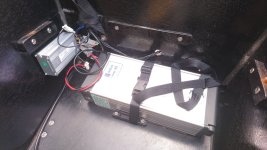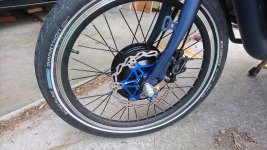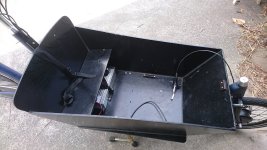Yes I see no hard and fast rule, but in this use case, your answer means no,
a 48V nominal, (51-58V) packs will be ideal, no need to go higher.
I have no problem with thick AWG wires as needed, used to dealing with up to an inch thick on boats.
The battery design will be driven by optimizing the drivetrain and of course range requirements, not the other way around.
It's great to eliminate one of the many variables.
If **lower** voltages are better for the motor / conditions, I assume that's the controller's job, I plan to oversize capabilities so normal operations leave plenty of headroom, lower stress on all components.
Going to small diameter wheels is not an option,
they need to be large for dirt/gravel, desert and forestry tracks, likely fat if I need to forego suspension,
and that context will thus require spending more on higher power and very strong / robust and reliable motors - suggestions welcome.
Speed not being important, will look for slower windings, get familiar with the simulator, rpm etc.
Obviously temp sensing will be critical given climbing and descending big hills.
Thanks for your help.
a 48V nominal, (51-58V) packs will be ideal, no need to go higher.
I have no problem with thick AWG wires as needed, used to dealing with up to an inch thick on boats.
The battery design will be driven by optimizing the drivetrain and of course range requirements, not the other way around.
It's great to eliminate one of the many variables.
If **lower** voltages are better for the motor / conditions, I assume that's the controller's job, I plan to oversize capabilities so normal operations leave plenty of headroom, lower stress on all components.
Going to small diameter wheels is not an option,
they need to be large for dirt/gravel, desert and forestry tracks, likely fat if I need to forego suspension,
and that context will thus require spending more on higher power and very strong / robust and reliable motors - suggestions welcome.
Speed not being important, will look for slower windings, get familiar with the simulator, rpm etc.
Obviously temp sensing will be critical given climbing and descending big hills.
Thanks for your help.





